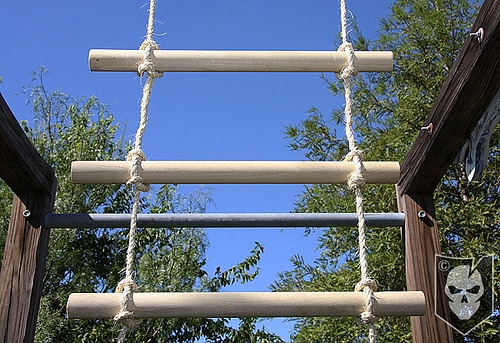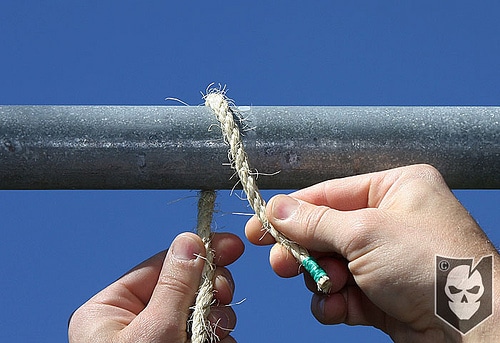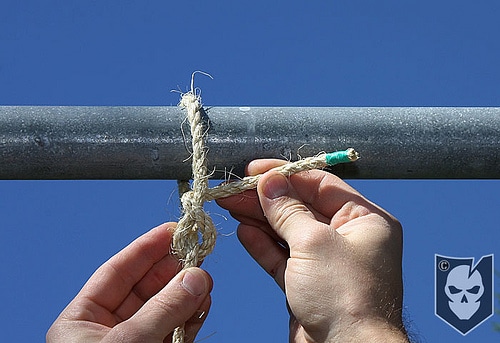
Editor’s note: This post was written by Bryan Black and originally ran on ITS Tactical.
If you lived on the second floor as a boy, you probably spent some time thinking about how you’d get out the window and onto the ground if there was a fire, and how cool it would be to climb down a rope ladder to make your escape. But maybe your parents never bought you that ladder and you didn’t know how to make one yourself.
Well today I’ll show you such a simple way to create a rope ladder, you’ll wonder how you never knew about it!
What you’ll see here is a field expedient way to quickly throw together a ladder in a rescue situation or to complete the final touches on a Pioneering project. A truly versatile technique that you should throw into your knotty toolbox.
Ladder Lashing
This ladder lashing should be created with natural fiber rope like Manila because it grips wooden rungs better. Natural fiber is always superior to nylon (or even paracord) in lashing situations, because of how it bites into wood, particularly rough wood. Natural fiber rope can also be soaked in water prior to lashing to create a stronger hold as it dries in the lashed position.
Something to note on this lashing, that I also mention in the video below, is that there are other ways to lash together a ladder that are more stable. You’ll see in the ratings below that under abnormal load this lashing isn’t that stable. This is because the rungs can move out from under a very heavy load. Even though I mention rescue applications for this lashing, please note that this would ONLY be in situations where putting a ladder together as quickly as possible is required.
(Strength: 3/Secure: 3/Stability: 1/Difficulty: 3)
Please refer to this post for a description of what these ratings mean.Uses:
- Field Expedient Rescue/Climbing
- Ladder to reach heights on Pioneering Projects
Materials
- Two equal strands of rope
- Wooden posts or tree limbs for rungs
Tying Instructions:

Start by using two equal strands of natural fiber rope that you’ve whipped the ends on (dental floss works great!).
Tie Two Timber Hitches to Fixed Point
Secure each strand to a fixed point with a Timber Hitch explained in the video and photos below:








Reach towards the two strands with both of your hands turned thumbs down. Let each strand sit in the groove of your thumb/index finger so that your fingers wrap around the strands.

Turn your thumbs rightside up, creating loops with each hand.

Insert your thumbs into the loops and grasp the standing part of each strand and pull it through the loop in each hand.

For the next steps you’ll need some sturdy posts or wood pieces to create as many rungs for the ladder as you’ll need (The rungs we used are approx. 16″ each). Have a buddy insert the rung into the gap created behind the standing part you pulled through each loop.* Repeat the process to create additional rungs.
*This method can be done without a buddy, but each side must be done one at a time so you’ll have a free hand to grab and insert the rung.
Watch the Video to See All the Steps in Action
ITS Tactical (Imminent Threat Solutions) is an awesome website run by Military Veterans and those serving in the Special Operations community that covers skill-set information, tactical gear reviews, and DIY projects that can help you live better and survive any scenario. Check ‘em out and become a member!


